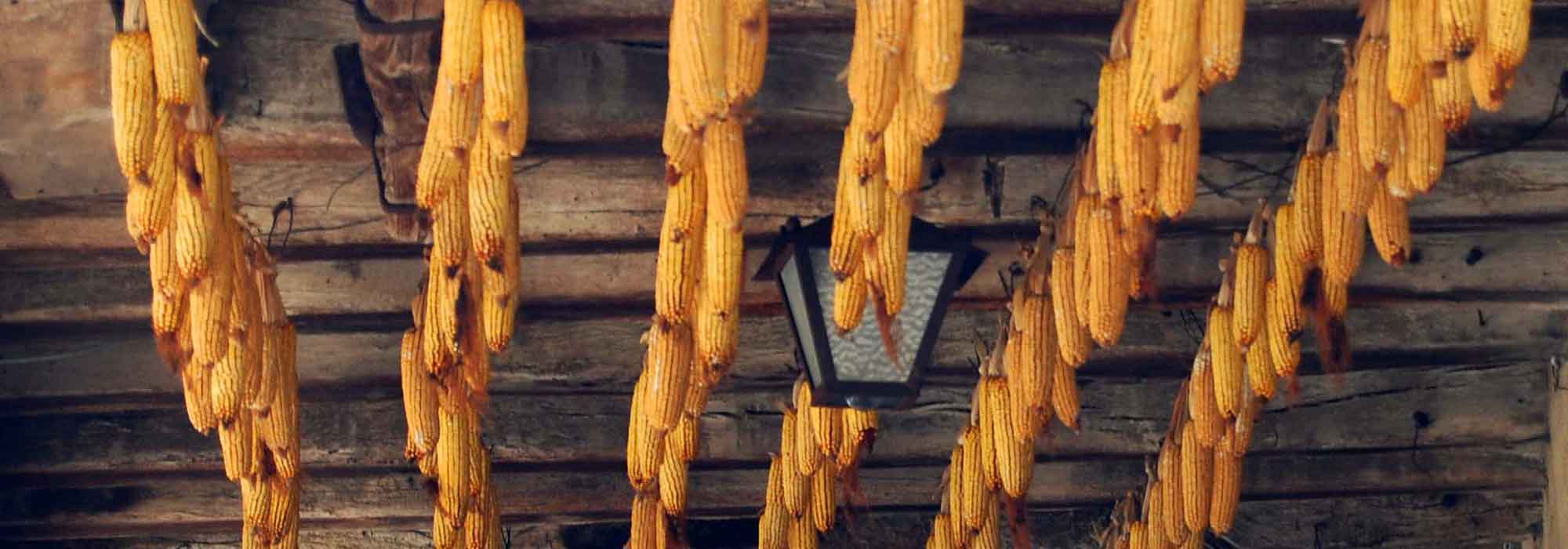
Cultivation of sweet corn: sowing, planting, harvesting
Contents
Corn in a nutshell
- Sweet corn is an annual cereal, grown in the vegetable garden as a vegetable.
- It is cultivated in the garden, in full sun and in loose, rich, well-watered soil.
- It is planted in blocks or in several ranks to ensure pollination and the formation of well-filled spikes.
- Sweet corn is harvested before the complete ripeness of the grains, while popping corn (for popcorn) is harvested at ripeness.
- The best way to consume it… fresh and on the cob!
The word from our expert
Sweet corn, a cereal grown as a vegetable, is quite uncommon in vegetable gardens. Nevertheless, its grains, which can be yellow, white, or purple, are delicious. They are harvested before full ripeness to ensure they remain tender, sweet, and not farinose. Popcorn, on the other hand, is grown specifically for making popcorn, with its spike harvested at full ripeness.
In France, we have a very limited selection of varieties to grow. One traditional variety of sweet corn is ‘Golden Bantam’, renowned for its excellent flavour and ease of cultivation due to its early maturity. It is now common to find mini spikes that can be eaten whole, so why not try ‘Snobaby’? And for your annual popcorn supplies, consider growing this amazing variety with red grains aptly named ‘Fraise’.
The cultivation of sweet corn and popcorn mainly takes place in the south-west of France, as the growing conditions are more suitable. However, do not hesitate to grow it throughout France; it is a crop that will adapt well to the vegetable garden and will present far fewer problems than in a monoculture field. In terms of preferences, a loose, rich soil, plenty of sun, and water will suffice to satisfy corn.
Sowing corn is primarily done in situ, as soon as the soil is sufficiently warm, in May. It can also be done under cover to hasten growth in cooler regions or simply to stagger the harvests in summer. Maintenance involves watering and hilling to ensure its roots develop harmoniously. Finally, it loves to be associated with squashes and beans.
Description and Botany
Botanical data
- Latin name Zea mays subsp. mays
- Family Poaceae
- Common name Maize
- Flowering Annual
- Height 2 to 5 years
- Exposure Sun
- Soil type rich, loose, cool
- Hardiness 0°C
Maize, the sacred plant of the Aztecs, is a plant native to Central America. Its cradle is located in central or southern Mexico, where it was domesticated by humans from teosinte (Zea spp.) over 9000 years ago. Its cultivation then spread across the equator. Maize was brought back to Europe by Christopher Columbus on his first return from America.
The common name Maize comes from Maiz, from the Taino, an indigenous ethnic group that occupied the Greater Antilles at the time of the Europeans’ arrival in the 15th century. The genus name Zea was chosen by Linnaeus and refers to the starch plant in Latin.
There are numerous selections and cross-breeds of maize, among the most common are (non-exhaustive list):
- Sweet or sugar maize (Zea mays saccharata) grown for fresh consumption.
- Popcorn maize (Zea mays everta) grown for popcorn.
- Flint maize (Zea Mays indurata) grown for the milling industry.
- Dent maize (Zea mays indentata) grown for animal feed (fattening) and for starch.
- Modern selections of maize (flint x dent) are grown as grain maize (starch, biodegradable bags) and as forage maize (whole plant for animal feed).
Cultivated Maize (Zea mays subsp. mays) is an annual herbaceous plant of the Poaceae (grass) family. Variable in size, the stems measure from 50 cm to 4 meters high depending on the varieties. The stem is usually single but it is common for maize to produce secondary stems (suckers), which is referred to as tilling. These stems bear large elongated leaves at each node. The root system is shallow, consisting of numerous roots that appear at the base of the stem and descend up to 1 meter deep.
Maize is an anemophilous plant, meaning that pollination occurs via the wind, although bees are sometimes attracted to the pollen as well. A single plant bears both male and female flowers (it is said to be monoecious). The male flowers, shaped like panicles, are grouped at the top of the stem and produce millions of pollen grains that fall onto the silks (inflorescences of the female flowers) either by gravity or are carried by the wind. Pollen grains can travel up to 500 meters on average, making cross-breeding common. It takes about 2 to 3 months from sowing to pollination and another 2 to 3 months from pollination to the complete ripeness of the grains in the spike. Sweet maize is a special case as it is harvested about three weeks after pollination.
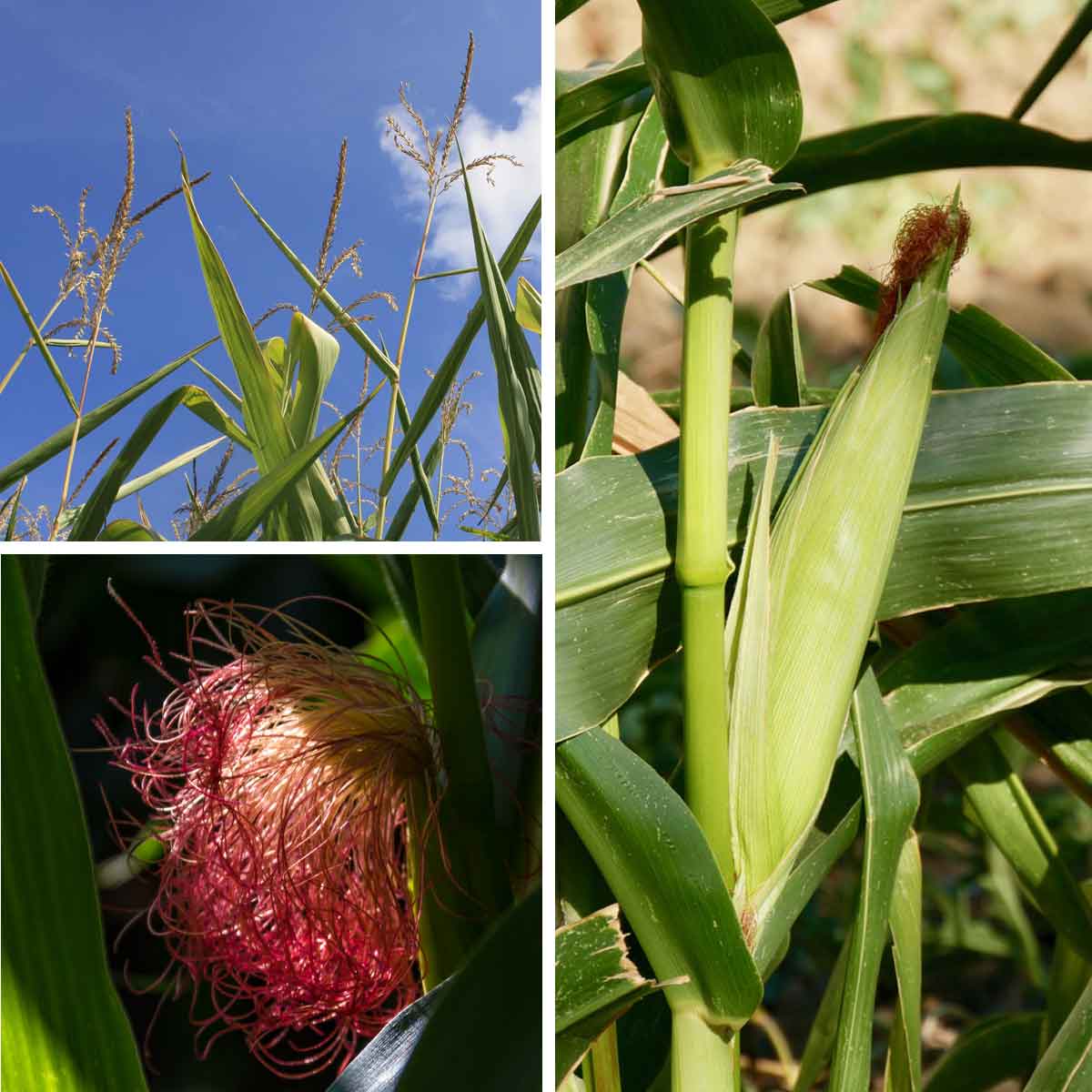
Male flowers at the top of the plant are laden with pollen; The silks of the female flower, each fertilised filament with pollen will produce a grain of maize; The formed spike
Sweet Corn Varieties
For the amateur gardener, there are relatively few varieties of corn compared to the genetic diversity found across the Atlantic. For consumption, we mainly distinguish between sweet corn varieties and popping corn varieties.
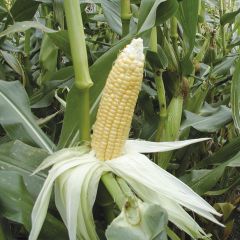
Sweet Corn Golden Bantam
- Flowering time July to October
- Height at maturity 2 m
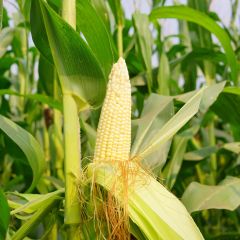
Sweet Corn Miner - Ferme de Sainte Marthe Seeds
- Flowering time July to September
- Height at maturity 1,50 m

Sweet Corn Swift - Zea mays
- Flowering time July to October
- Height at maturity 2 m
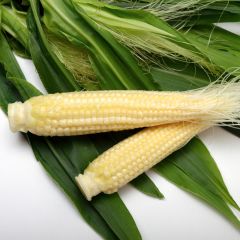
Mini sweetcorn Snobaby - Zea mays
- Flowering time July to October
- Height at maturity 2 m
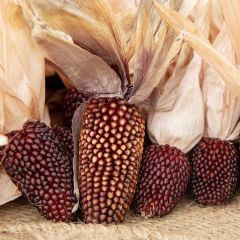
Corn Strawberry Popcorn - Ferme de Sainte Marthe Seeds
- Flowering time July to September
- Height at maturity 1 m
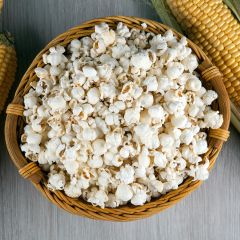
Corn Tom Thumb Popcorn - Ferme de Sainte Marthe Seeds
- Flowering time July to September
- Height at maturity 50 cm
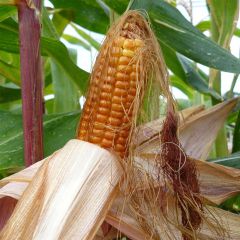
Corn Amarillo - Ferme de Sainte Marthe Seeds
- Flowering time July to September
- Height at maturity 2 m
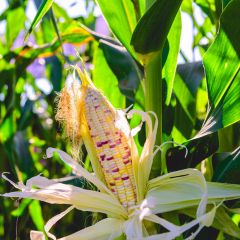
Organic Multicoloured Maize - Ferme de Sainte Marthe seeds seeds
- Flowering time July to September
- Height at maturity 2 m
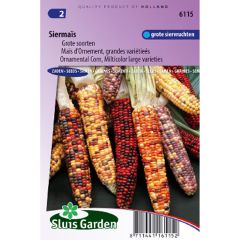
Zea mays japonica large varieties - seeds
- Flowering time July to November
- Height at maturity 2 m
Discover other Sweetcorn
View all →Available in 1 sizes
Available in 1 sizes
Available in 1 sizes
Available in 1 sizes
Available in 1 sizes
Available in 1 sizes
Available in 1 sizes
Available in 1 sizes
Available in 1 sizes
Available in 1 sizes
Sowing maize
The sowing of sweet corn takes place in spring, between April and June. Its seed can be sown directly in the ground, in rows or in clusters of several seeds. The soil must be sufficiently warmed (12°C). In colder regions, sowing can be done in buckets, indoors, using seed compost and a bit of compost. The best young plant from each bucket will then be replanted in the ground around May-June.
Sowing in rows
- Sow the corn in full sun after soaking the seeds in warm water for 12 hours.
- Stretch a line and dig furrows a few centimetres deep (3 to 5 cm), spacing the ranks 70 cm apart.
- Sow one seed every 10 cm.
- Cover with fine soil and ‘firm’ lightly with the back of the rake.
- After germination (about ten days), thin out to keep one young plant every 20 cm.
Sowing in buckets
You can start sowing in buckets, in warmth, as early as March, and you will plant them in May-June in the garden.
- Sow 2 to 3 seeds 3 cm deep per bucket in seed compost.
- Water regularly until germination.
- Thin out to keep the best young plant per bucket.
- Then plant in the garden from May onwards.
Association
Corn is the vertical pillar in the most famous of vegetable associations, the milpa, also known as the association of the three sisters. We owe this association to the Native Americans who cultivated corn in association with climbing beans and squashes. These three plants provide mutual benefits: a nitrogen residue from the bean (after harvesting), corn serves as a support for the bean, and the squash protects the soil with its large foliage, providing more freshness, creating a microclimate, and competing with adventive plants.
To create a milpa, in practice, first sow the corn in rows (at least 2 rows). When it reaches 10 cm in height, sow two seeds of climbing beans on either side of each corn plant. A squash (or courgette) plant is sown – or you may prefer planting – every 1 or 2 metres (depending on the expected growth of the variety) on either side of the corn rows.
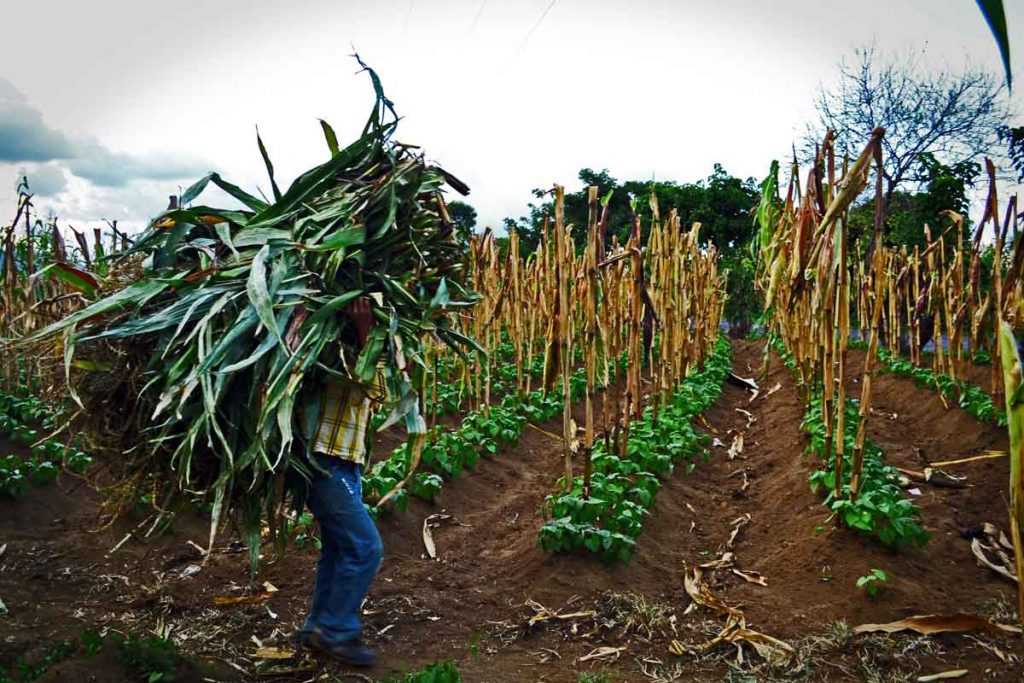
Still rooted in culture in Central and South America, here is an association inspired by the milpa (legume + cereal): dwarf beans at the foot of the corn.
Cultivation and maintenance
Corn enjoys a sunny exposure and loose, rich soil: Add manure or compost during its preparation, for example in the previous autumn, to enrich the plot intended for sowing. The rotation between two crops of corn is about 4 years.
However, it is important to plant several rows of corn or to grow them in a square to promote good pollination. Indeed, the pollen from the male flowers (at the top of the stem) will fall onto the female flowers, located lower down on the stem. This fertilization can occur naturally with the wind or voluntarily by shaking the plants.
When the corn has reached about 30 cm in height, hill it up to 10 cm high to promote anchorage in the soil. Water regularly if it does not rain (once a week) but never on the male flowers during pollination. Cover the soil with mulch to retain moisture (grass clippings, straw…).

The right stage to hill young corn plants
Diseases and Pests
The corn borer
The caterpillar of the borer, a pest butterfly of corn, burrows into young corn spikes as well as sometimes the heart of the stems, causing them to break. As a preventive measure, shred crop residues before using them (for compost or mulching). Ensure good crop rotation by not growing corn in the same plot for at least 4 years. In case of a severe infestation, you can spray a solution of Bacillus thuringiensis, but this solution is not 100% reliable. Indeed, the caterpillars are protected by the sheath surrounding the spike.
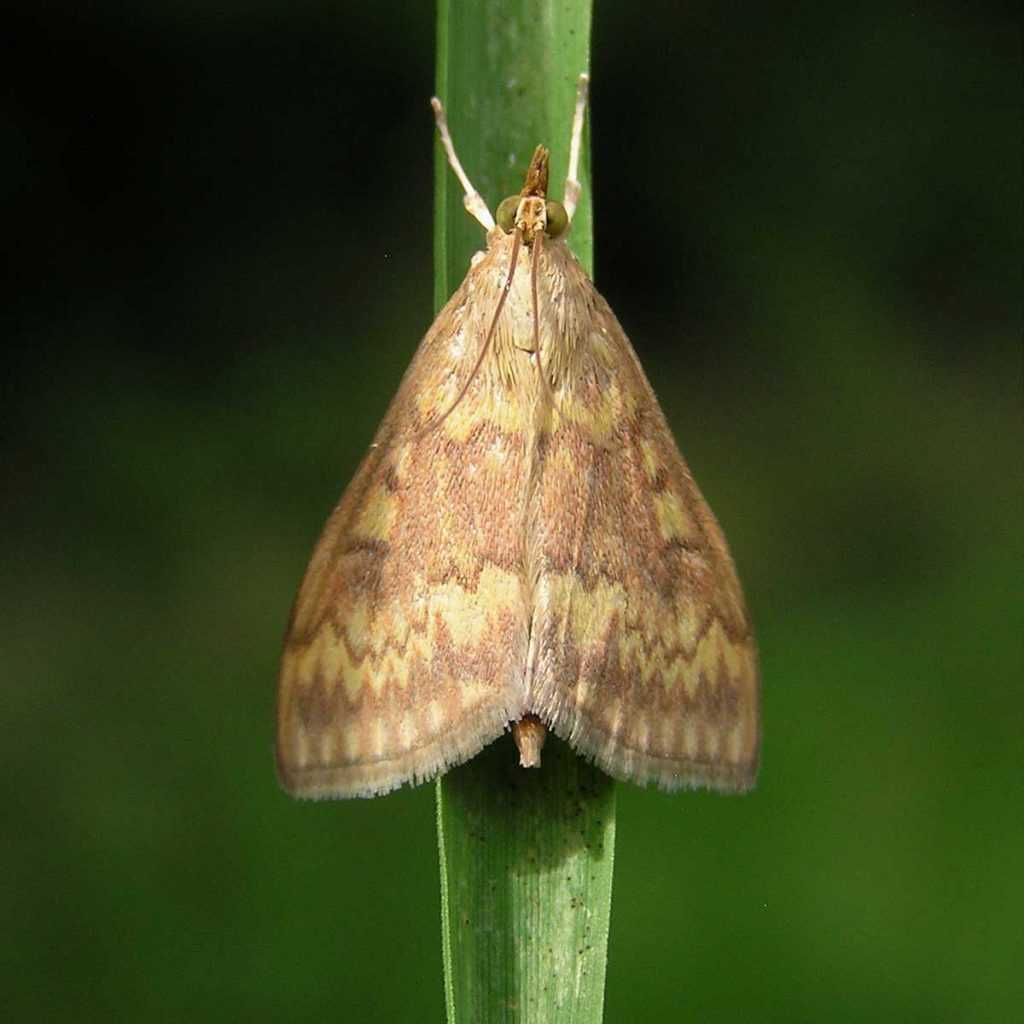 The adult corn borer, but it is its caterpillar that damages the corn
The adult corn borer, but it is its caterpillar that damages the corn
Harvest and preserve
The harvest of sweet corn takes place approximately 80 days after sowing, depending on the heat and watering, when the silks begin to brown, about three weeks after pollination on average. The kernels should be well developed but still tender. To check if they are ripe, take a few from an ear and taste them. You can also squeeze them between your fingers; they should be slightly milky. If harvested too late, the sugar turns into starch and the skin becomes hard.
To preserve corn, after harvesting, remove the green sheath that envelops the ear, and consume quickly. To keep it longer, cook it and then store it in jars or freeze it.
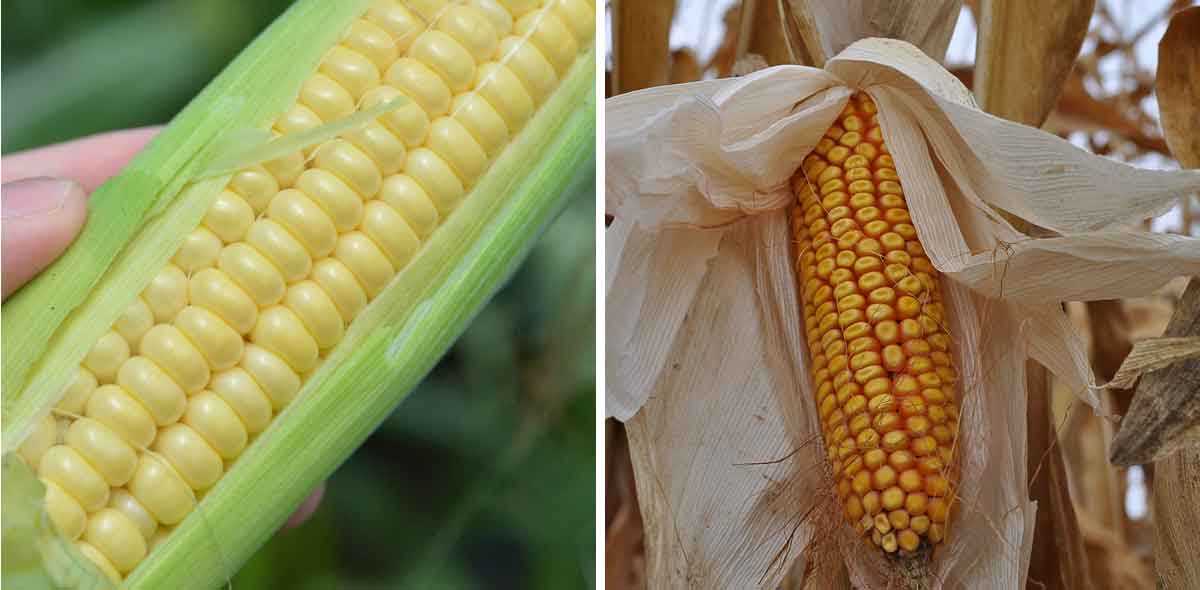 1) Good harvest stage for sweet corn, the kernels are tender, milky inside, not mature 2) Good harvest stage for popping corn, the kernels are hard and mature[/caption>
1) Good harvest stage for sweet corn, the kernels are tender, milky inside, not mature 2) Good harvest stage for popping corn, the kernels are hard and mature[/caption>
Culinary Uses and Nutritional Benefits
Sweet corn is the fifth most consumed vegetable (cereal to be precise) in France. While canned corn is the most well-known and common, corn on the cob is much less so, except for gardeners.
Straight from the vegetable garden, sweet corn on the cob is excellent raw or just blanched for a few seconds in boiling water. For even more flavour, they can be grilled for a few minutes on the barbecue grill; grill them in their husks for added taste!
We can be grateful to the Native Americans who selected this cereal with its many health benefits! Sweet corn is rich in carbohydrates but its glycaemic index remains low, which limits the conversion and storage of carbohydrates as fats. It is rich in magnesium, fibre, and its beautiful yellow colour indicates its richness in carotene and antioxidants. It contains protein but is gluten-free. Finally, it is rich in vitamin B, which is good for the brain, helps prevent cardiovascular diseases, combats depression, and prevents osteoporosis.
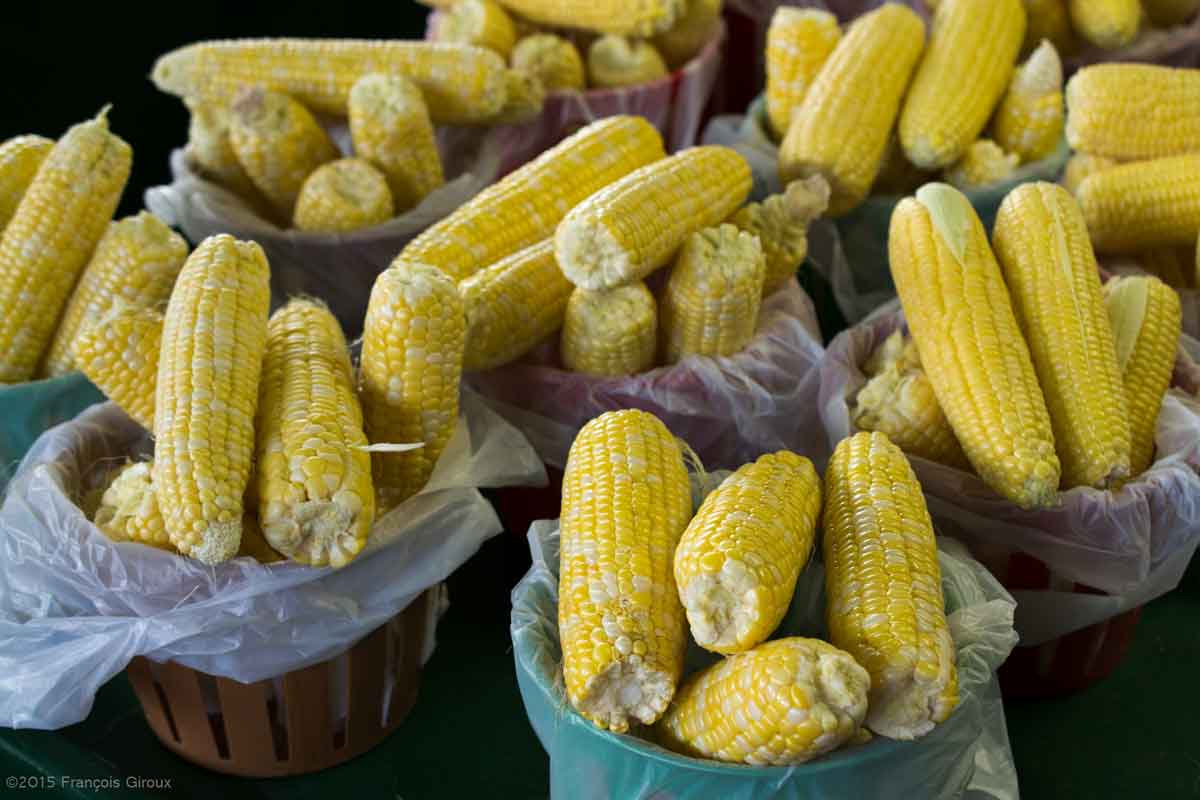
Making your seeds
Sow only one variety at a time, or two varieties with staggered flowering: corn hybridises very easily and you would not harvest the sown variety. If your garden is located less than 400 m from a cornfield, the risks of hybridization are significant. This distance should be increased if your garden is situated in a windy area. However, be aware that natural hedges are relatively effective at protecting your varieties from unwanted cross-breeding.
It is recommended to force pollination by shaking the male flowers with a stick to drop the pollen onto the bristles of the female flowers. During flowering, the plant must not lack water for fertilization to occur properly.
Unlike harvesting for consumption, allow the sweet corn spikes to reach maturity for seed production. For sowing done in May, the harvest of mature spikes generally takes place in September or October.
Then let the spikes dry and wait until they are thoroughly dry before separating the grains from the spikes.
Useful resources
- Discover our range of sweet corn and popping corn: multiple varieties to sow.
- Check out our advice sheet on the 10 corns to grow in the vegetable garden.
Frequently asked questions
-
Why do my corn spikes have very few grains?
Poorly filled corn spikes can be explained by inadequate pollination. To limit this phenomenon, here are our various recommendations: Grow corn in several adjacent ranks or in a square to allow pollen to better fertilise the bristles of the female flowers. Encourage pollination by tapping the male flowers located at the top of the young plants. Avoid watering the male flowers by spraying at the time of pollination.
-
Should you remove the suckers?
It is not necessary to remove the lateral shoots of maize, as they allow the young plants to generate more photosynthesis and thus provide more vigour for spike formation.
- Subscribe!
- Contents

































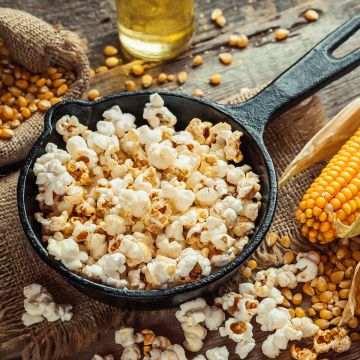

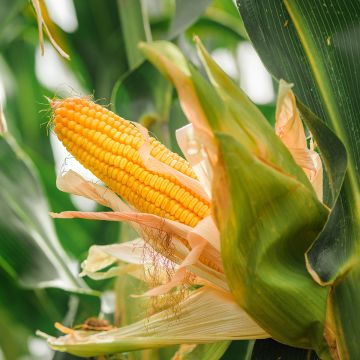
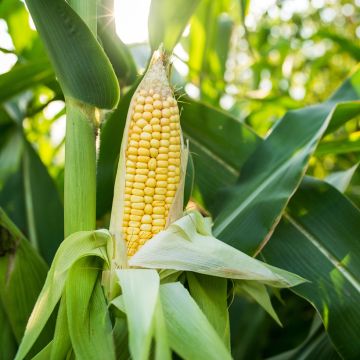
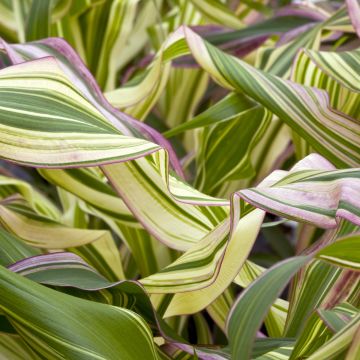
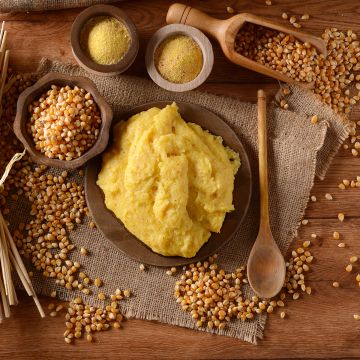
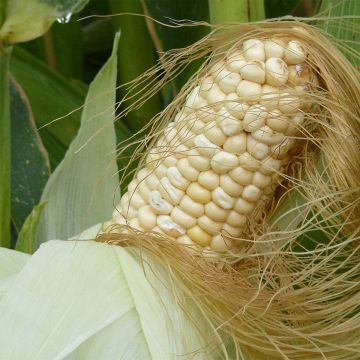
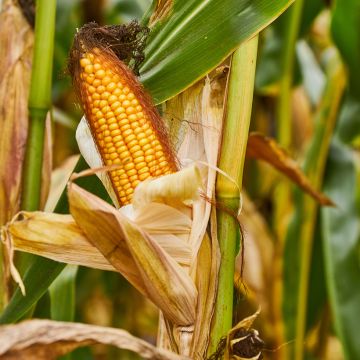
Comments